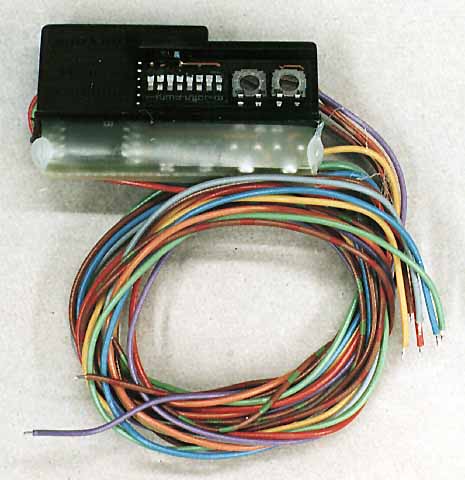
The new decoders 60901/60902 have the normal function f0, which is mostly used for locomotive lights, and two functions f1 and f2 for other actions. The function f4 sets the acceleration and braking delay to the minimum value. The wiring arrangement is as follows:

red = pick up shoe (power/data)
brown = ground (power)
blue = engine
green = engine
grey = front light (function f0 (negative DC))
gelb = rear light (function f0 (negative DC))
orange = backwire for all functions (positive DC)
brown/red = function f1 (negative DC)
brown/green = function f2 (negative DC)
purple = ground for electronic components (negative DC)
In older locomotives the "return wiring" for lights goes through the ground / chassis (brown). With the new decoders the orange wire should be used for return wiring since this provides flicker-free lights, provided the light bulbs have two separate contacts. Under no circumstances should the orange wire have any contact with the chassis.
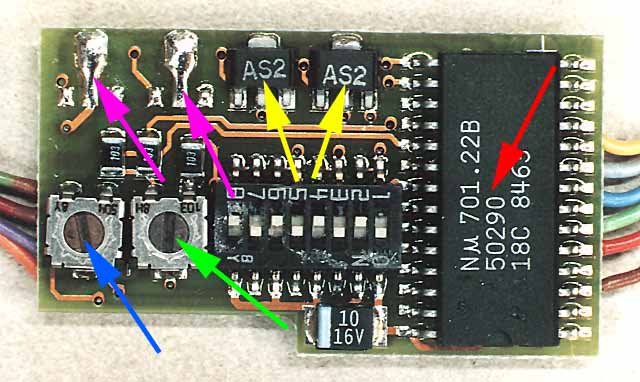
The old 6090 decoders have the transistors for the engine and the function f0 outside the 701.13 chip. On the new decoders they are integrated in the 701.22 (red arrow). The transistors for the functions f1 and f2 are still outside(yellow arrows). The potentiometers on the 60901/60902 are labeled wrongly in the manual. The potentiometer near the dip-switches adjusts the top speed (green arrow), and the other one is for the acceleration and braking delay (blue arrow). It is possible to use the function f3 and f4 with this decoder, but you have to add on (solder) two new transistors (purple arrows).

On the backside of the decoder two wires must be soldered on (green arrows). It is important to change the function f4, which determines the delay. The are three solder pads on the board (red arrows), but at this time I do not know which one must be changed. I am looking for a solution.
The locomotives V200, also 220 and 221 have red rear lights as factory equipment. The rear lights of the V200.0 are quite dark, but you will find a solution to this problem on (page 4: BR 220 (3380/3780)). All these locomotives are excellent choices for reversible trains.
The problems are the headlights on these locomotives, which remain lit even on the side that is connected to the train. They should remain dark, but are not and that looks unrealistic. While this might be acceptable in cases where the locomotive pulls the train, it is not acceptable as soon as the locomotive starts pushing the train. The V200 with sound module (37803) has the option to switch off the lights on one end of the locomotive with the function f2 and f4. The light reversal on the other side works like it did before. I connected a 60902 decoder to my 220, but it does not work, because the decoder of the 37803 is different. Some additional electronic components are needed.
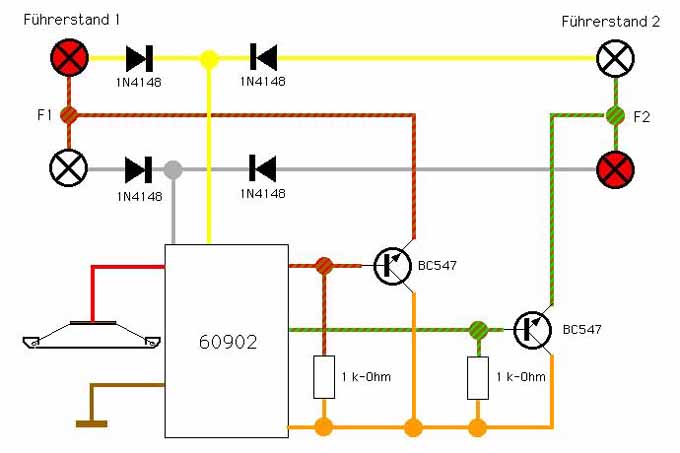
To avoid wasting too much space, I use a small circuit board with connecting stripes (similar to a breadboard) to solder the parts. It is important to break the connections at two points (gray areas). I use the npn-transistors BC547, but other TO92 transistors like the BC239, BC338 or BC550 are fine too. I took the diodes 1N4148, but 1N4001 will work as well.
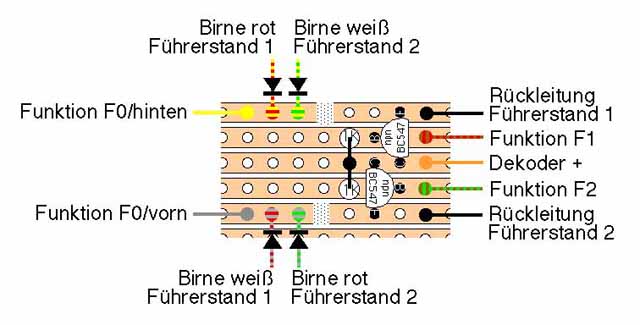
This is the completed board. It is small enough to fit in the most locomotives.
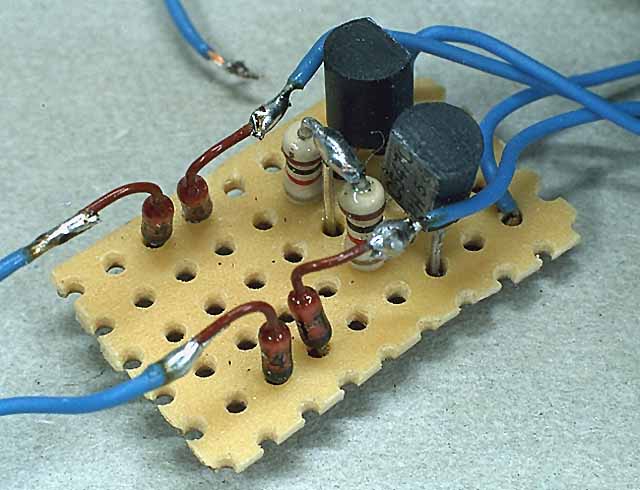
The V200 has a lot of space, so I placed the layer into the hole in the middle. I fixed it with double-sided adhesive tape. Be sure that non of the electric parts touch the chassis. Earlier this loco had an 6090 decoder, which fits into the holder 258820. It is possible to place the 60902 in the same way, but you have to remove the original plastic packaging. To protect the decoder against electric noise, I soldered a third choke coil (red arrow) between pick up shoe and decoder in the red wire.
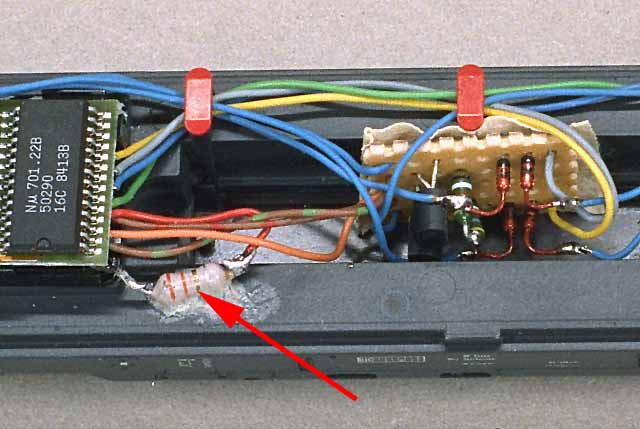
After connecting all wires, I do the first driving test. All works well. If f1 and f2 are off, the lights on both sides are on. If f1 is on, all lights on side one of the locomotive are dark, the lights on side 2 work well. The same occurs when f1 is turned off and f2 on, but on the reverse sides. All lights are flicker-free.
The driving test shows some difference to the old 6090. All my locomotives are set to speed level 10 = 100 km/h. With speed level 7 they run 70 km/h and with level 4 nearly 40 km/h. On the lowest speed level all 60901/60902 locomotives are much slower than locomotive with the 6090. But this is not always the case. If I switch from level 0 to level 1, it is very slow. If I start with level 2 and switch down to level 1 after 2-3 seconds, the speed is higher. With an old 6090 decoder, the speed is always the same. The regulation of the new decoders is not as precise.
